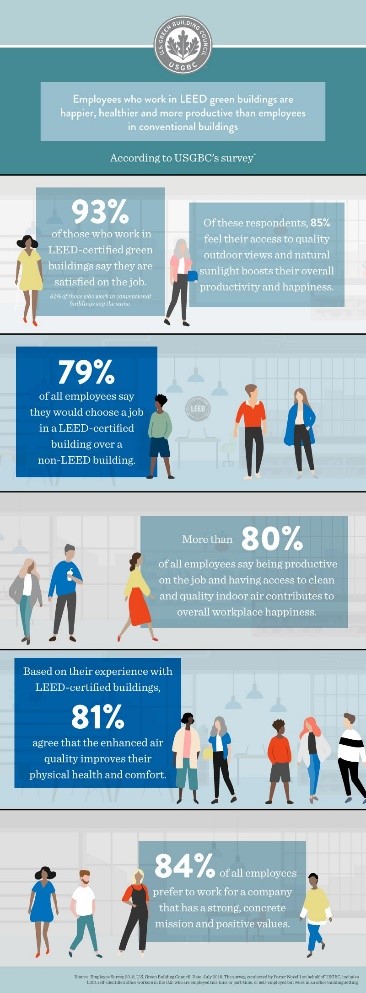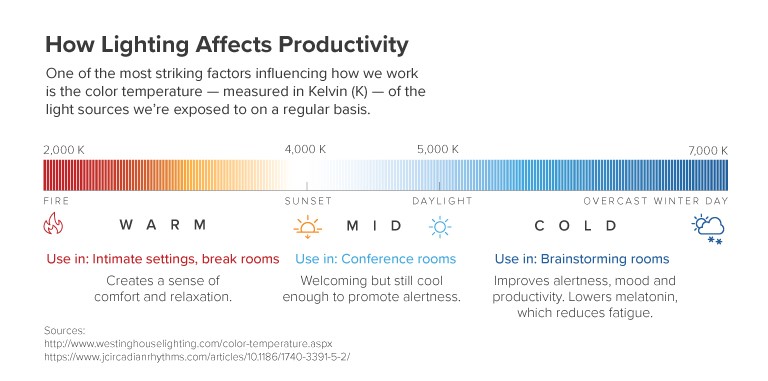

Blog
Leading organizations know that improved wellbeing helps employees to be healthier and lowers healthcare costs. It also helps employees to be more productive, creative and innovative, and less likely to leave for a competitor. The same concept can be applied to tenants in rental buildings and condos.

Quick pulse survey: in the last three months, since we published our Part I blog on tips for healthier indoor environments, how many of you have either incorporated some of our healthy recommendations into your home, or informed your clients on the most effective ways to address health risks in buildings (hint: if you need a refresher, please visit Part I)?
As previously discussed, there is overwhelming evidence for the business case for healthier buildings, from greater employee productivity and reduced sick days in the workplace to reduced asthma incidents and ER visits for children living in green housing. Leading organizations know that improved wellbeing helps employees to be healthier and lowers healthcare costs. It also helps employees to be more productive, creative and innovative, and less likely to leave for a competitor. The same concept can be applied to tenants in rental buildings and condos.
Before we dive into health tips #6-10, here are some fun (and not so fun) facts to keep in mind while we spend winter days INSIDE our workplaces, schools and homes:

TOP TEN TIPS:
(See Part I for tips 1-5)
and
There is a significant association between the prevalence of asthma among children and adults and the presence of pests, allergens (high cockroach and mouse allergen levels) and pesticides. Pests, especially cockroaches and mice, affect indoor air quality and can trigger allergic reactions or asthma attacks. In some NYC neighborhoods, more than 50% of households report seeing cockroaches daily and mice within the last three months. More than 20 million people suffer from chronic asthma, including eight million children. To help manage and avoid pests, use our PEST strategy:
P– revent by design (via air sealing entry points, moisture buildup (fixing water leaks), managing and removing garbage, etc.)
E– valuate existing conditions and develop an integrated pest management plan (IPM) with a focus on preventative measures. For further information, check out NYC’s Department of Health and Mental Hygiene’s Integrated Pest Management Toolkit
S– ervice existing issues and implement measures to prevent future problems.
T– rain building management on response strategies AND tenants on best practices. Avoid pesticide use, if possible.
Since noise increases stress, acoustics are considered one of the leading sources of dissatisfaction within an occupied space. Studies have shown a strong correlation to depression, stress, and heart disease when occupants are exposed to high levels of sound, such as road traffic. According to Harvard’s 9 Foundations of Health, each year, around 30 million Americans are occupationally exposed to hazardous noise levels and another 26 million Americans ages 20-69 have hearing loss that may have been induced by noise exposure in the workplace or leisure activities. To control for sound, we recommend using sealing and sound attenuation to separate multi-dwelling units, choosing fans based on sone ratings, remote-mount fans, study ‘free area’ for grilles and louvres to avoid whistling, and test for background sound. Better acoustics reduce distraction and make for a better home and working environment. Buildings 2030 has also established a business case for better acoustics, claiming an increase in productivity by 2-3%.
Lighting affects our alertness, productivity, decision making abilities, and our circadian rhythm. Biological circadian rhythms refer to the 24-hour light–dark cycle. Artificial (electrical) light throws off our natural rhythms and can lead to sleep disorders, increased risk for accidents, metabolic disorders, cardiovascular disease, and some types of cancer. Visually induced health impacts include visual strain, eye irritation, and blurred vision from uncomfortable glare, direct light input, high illuminance, and high-contrast conditions from lighting fixtures and computer screens. Lighting and views have been proven to affect stress levels, sleep, and productivity. We all know that having access to natural daylighting and views makes us happier, but it also can make us smarter. A study conducted by National Geographic showed that students in classrooms with more natural light scored 25 percent higher on standardized tests than other students in the same school district. If we can’t have access to natural light, let’s design our spaces to follow our natural circadian rhythms through the right lighting levels, intensities and colors.

In a 2018 report published by the World Green Building Council, studies found that people are 7x more engaged if they have a friend at work and that 80% of people feel relaxed after spending time in a garden. Tip #8 touches upon creating views to the outdoors, but we can also incorporate benches and roof gardens to encourage spending more time outdoors. Perceived connection to the outdoors from within buildings through daylighting, views, and natural design elements (“biophilia”) have been linked to improved sleep duration and mood, reduced sleepiness, reduced stress, lower blood pressure, and increased physical activity. Biophilic design brings the bond that humans have with nature indoors. In addition to mental advantages, there appear to be direct physical health benefits, such as increased longevity and self-reported feelings of good health from connection to nature (hence the hug suggestion). We can help foster this connection with nature – and with each other – through installing murals, pictures, living walls, and other patterns that we observe from and through our exterior surroundings.
There are approximately 57 million Americans living with disabilities in the United States; worldwide, people with disabilities make up 15% of our population. The primary, often overlooked, connection between disability and health is that many of the issues targeted by public health initiatives (i.e., asthma, diabetes, heart disease, mental illness, etc.) qualify as disabilities under the Americans with Disabilities Act (ADA). Healthy People 2020 lists the built environment as one of the main determinants of health for people with disabilities; and cites the design of the built environment as being critical to, “achieve growth, development, fulfillment, and community contribution” for the disability community. Given this information, it is paramount that any health initiative, specifically one which strives to impact the design, operations, and management of buildings, concertedly address the needs of the disability community. Universal design is being embraced across the built environment. Design strategies include environments that support aging in place, social networks, active living, age-friendly workplaces, and person-centered healthcare. When designing for aging, there are great opportunities at hand to design for ourselves – for every age – for all. In addition to promoting universal design, we should design and advocate for increased exercise and activity options throughout our living and working spaces. More than half of all adults get less than the 150 minutes per week for moderate physical activity recommended by the World Health Organization, which can lead to shorter life span, chronic diseases and mental health issues such as depression. Have you heard that SITTING is the new SMOKING? Physical inactivity rivals smoking as the leading cause of preventable death in the world. A 25% increase in physical activity could avert 1.3 million untimely deaths worldwide annually. Using NYC’s Active Design Guidelines can help encourage people to move more within their buildings.
When we educate ourselves and our clients on correct ventilation, noise and lighting levels, access to fitness equipment, views, and nature, we not only help make occupants healthier, more productive and more present, but we can also profit. There are tangible results that can offset some of the energy upgrades and yield a quicker return on investment. As you have just read, not all of these tips are energy related and/or low hanging fruit. The healthy building movement is increasingly being embraced by real estate professionals and the marketplace. Let’s not only get healthy through smarter design choices – let’s invest in it!
For further resources, please check out our previous blogs on green building program comparison and exhaust ventilation.
Contributor: Lauren Hildebrand, Sustainability Director
Steven Winter Associates